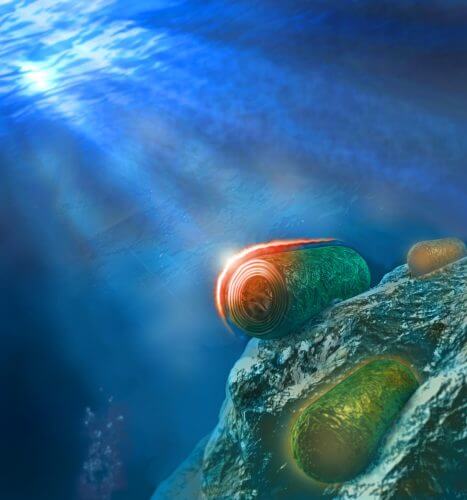Research by Prof. Noam Adir from the Technion: This is how bacteria protect their photosynthesis mechanism from excess radiation

Photosynthesis, which is familiar to us from the plant world, is essential for the entire animal world - not only for organisms that carry out photosynthesis themselves. This is because even animals that do not carry out photosynthesis consume the main product of photosynthesis - glucose.
Due to the importance of this process, photosynthetic organisms have developed mechanisms that protect them from overexposure to sunlight. Just as the film in the pre-digital cameras may burn from such exposure, the natural photosynthesis systems may also malfunction as a result of excessive radiation and lead to the death of the organism.
One of the aforementioned defense mechanisms has now been revealed in a study conducted by Prof. Noam Adir and doctoral student Dvir Harris from the Schulich Faculty of Chemistry at the Technion in collaboration with Dr. Diana Kirilovsky and her laboratory from the I2BC-CEA Institute in France. The article was recently published in the scientific journal PNAS.
The aforementioned defense mechanism is deciphered in cyanobacteria (what used to be called "blue algae"). The main player in this mechanism is OCP - a protein that changes its structure and color in response to strong light. This change results in the inhibition of the flow of energy reaching the photosynthetic reaction center, by a reaction between the active unit of the OCP and the phycobilsome (PBS) - the protein complex that functions as an antenna for receiving light in cyanobacteria.
"In this study, we discovered how the OCP causes the inhibition of energy," explains Prof. Adir. "In fact, the protein functions as a biological switch. In response to strong light it changes, penetrates into the PBS, and inhibits the passage of energy. In this situation, most of the absorbed solar energy is converted into heat on the way without passing further from the antenna towards the photosynthetic reaction centers. According to experiments conducted in the past, this protection mechanism blocks more than 90% of the sun's radiation. As soon as the radiation weakens, the protein returns to its normal state and the flow of energy is renewed."

One response
Hello, I am a teacher majoring in biology, 11th grade, at Olpanit Tiberias. We did work on photosynthesis rate differences between chlorella and cyanobacteria at the different wavelengths.
The results of the experiment showed that the rate of photosynthesis in general was more optimal in cyanobacteria compared to chlorella. Does that make sense?
In addition, to our surprise, in the red and blue filters, the rate of photosynthesis was the lowest (in both organisms)
Can't crack the reason.
Would appreciate help.
Michal Kinneret 0527985742